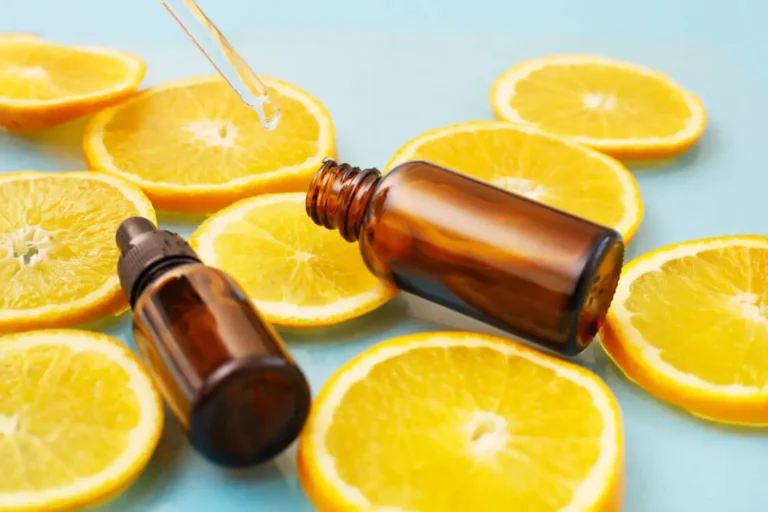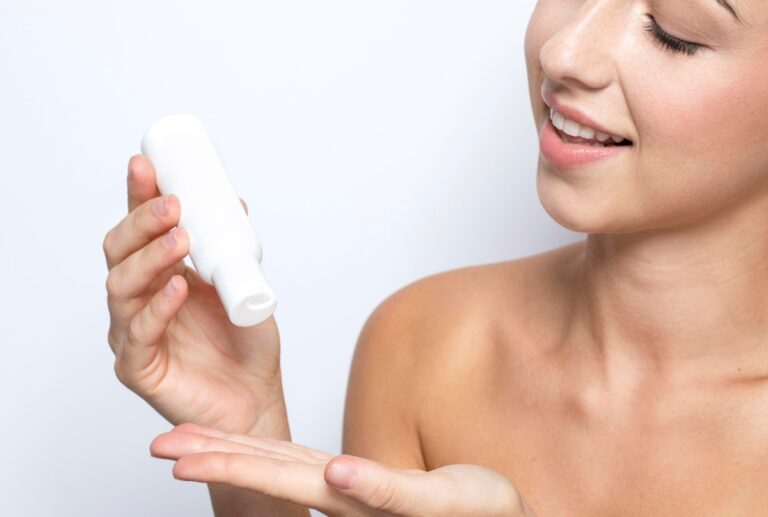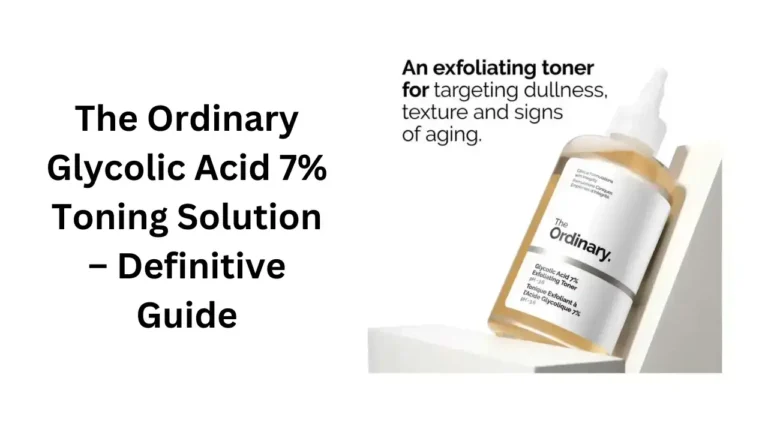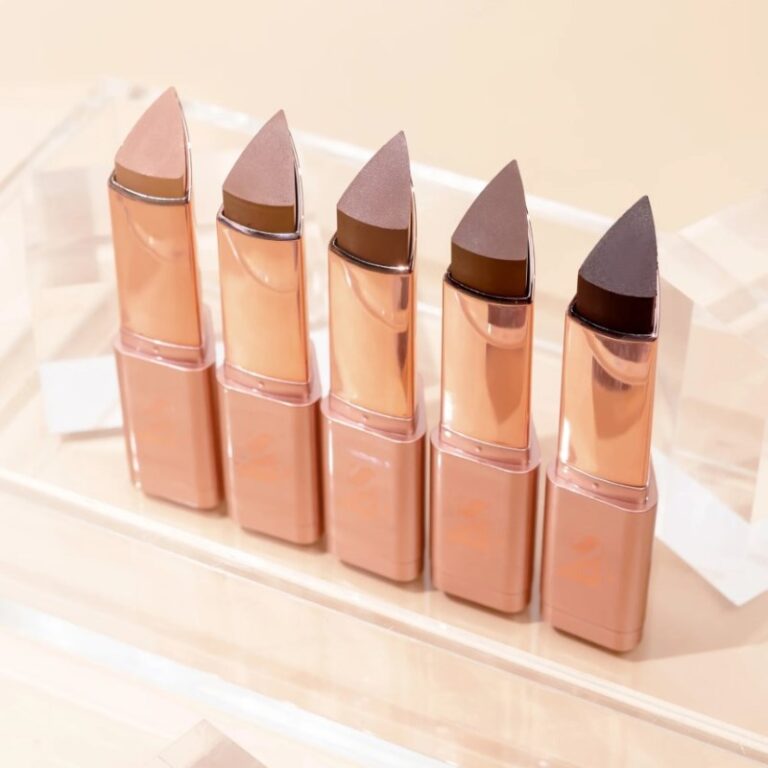How Long Does It Take to Tan? Unlock the Secrets to a Golden Glow
While it’s common knowledge that a tan makes you seem sun-kissed, how long does it take to tan? Whether you’re lounging on the beach, utilizing tanning beds, or self-tanning products, knowing the procedure will help you get the desired results.
In this article, we’ll discuss the factors—like skin type, sun exposure, and tanning techniques—that determine tanning duration. This book will teach you the information you need, regardless of expertise level, to maintain the healthiest skin possible while maximizing the benefits of tanning.
Let’s find out how long does it take to tan and how you can accelerate the process for a faster, deeper tan.
How Long Does It Take to Tan? Effects on Skin Health
1. Immediate Effects of Tanning
The most obvious immediate effect of tanning is the darkening of the skin. Depending on your skin type, this might show up a few hours after exposure or take several days to fully develop. Severe sun exposure can have acute adverse effects such as redness, warmth, and even sunburn in addition to the tan.
Sunburn occurs when the skin’s protective mechanisms are overwhelmed by excessive UV radiation, leading to inflammation, pain, and in severe cases, blistering. These symptoms are signs of acute skin damage and should be treated seriously, as they indicate that the skin has been harmed at a cellular level.

2. Long-Term Effects of Tanning
While tanning frequently has short-term, innocuous effects, there may be more detrimental long-term repercussions. Extended and recurrent exposure to ultraviolet radiation hastens the aging process of the skin, resulting in early wrinkling, fine lines, and elasticity loss. The disorder referred to as photoaging is brought on by the skin’s elastin and collagen fibers breaking down, which is crucial for keeping the skin tight and structurally intact.
Furthermore, tanning raises the possibility of hyperpigmentation, a condition in which some skin patches grow darker than the surrounding areas. This uneven skin tone can be difficult to treat and may require the use of specialized skincare products or professional treatments.
One of the most concerning long-term effects of tanning is the increased risk of skin cancer. Since UV radiation is known to cause cancer, frequent exposure can result in the development of skin cancers such as squamous cell carcinoma, deadly melanoma, and basal cell carcinoma.
Long-term, intense sun exposure and sunburns are significantly linked to melanoma, especially in those with fair skin. Regular tanning, whether from sunbathing or tanning beds, significantly raises the chance of developing these illnesses.
3. Tanning and Skin Care: Striking the Right Balance
Although it makes sense to be drawn to a tan, it’s important to balance the visual advantages against any possible health dangers. The biggest organ in the body, the skin acts as the body’s first line of protection against external influences. Keeping it safe from UV rays is crucial to preserving general health and wellbeing.
Optimal UV Levels for a Safe and Effective Tan
Curious about how long does it take to tan on the sun with different UV Levels? When evaluating the efficacy and security of your tanning session, the UV Index is an important consideration. The UV Index calculates how much ultraviolet (UV) radiation the sun emits at a specific place and moment. The World Health Organization (WHO) and other health agencies produced it.
Knowing the UV Index will enable you to minimize the risk of skin damage when sunbathing at the most advantageous times. Which UV Index values are ideal for tanning will be discussed in this section, along with safe approaches.
1. Recognizing the UV Index Scale
Higher numbers on the UV Index scale, which goes from 0 to 11+, indicate greater UV radiation:
- 0-2 (Low): UV exposure danger is negligible. Most skin types have a low risk of sunburn, and tanning may be sluggish or nonexistent.
- 3-5 (Moderate): Mild UV danger. While tanning is feasible, care must be taken, particularly for people with fair skin.
- 6-7 (High): Elevated UV danger. Sunburn risk increases along with the rate of tanning. Precautionary steps are highly advised.
- 8-10 (Very High): Extremely high UV danger. Although tanning can occur quickly, there is a considerable danger of skin injury. It is imperative to take protective measures.
- 11+ (Extreme): Severe UV danger. At this point, tanning speeds up, but so does the risk of getting a serious sunburn and long-term skin damage. Enough protection is essential.
2. Appropriate UV Index for Sun Protection
A UV Index of 3 to 7 is generally thought to be optimal for tanning. This spectrum provides a good mix between controlled risk and tanning effectiveness. This is why this range is ideal, examined in more detail:
- UV Index 3-4 (Moderate): UV light is strong enough at this point to encourage the synthesis of melanin, which results in a gradual tan. For people with fair skin or those who have never tanned before, it’s a safer alternative because there’s less chance of burning than with greater UV levels. If you use moderate protection, such as SPF 15–30 sunscreen and take rests in the shade, you may enjoy prolonged sun exposure.
- UV Index 5-6 (Moderate to High):In this range, tanning becomes more effective. Because UV radiation may cause skin to become brown more rapidly, it’s a popular choice for those looking to tan much faster. However, the likelihood of being burnt increases, especially for those with pale skin. It’s essential to use sunscreen that has at least 30 SPF and to reapply it often. Hats and sunglasses are also useful in protecting sensitive areas such as the face and eyes.
- UV Index 7 (High): Tanning happens quickly at this level, so you should start to see effects after a short while of exposure. But there’s also a significant chance of being sunburned, especially for people with light to medium skin tones. Wear protective clothes, apply broad-spectrum sunscreen with an SPF of 30 to 50, and restrict your exposure time to get a safe tan at this UV level. Preventing overexposure can be achieved by taking regular rests in the shade.
3. Raised UV Index Levels: Dangers and Safety Measures
The intensity of UV radiation is more hazardous as it surpasses a value of 7. While tanning can occur fast, skin injury is also a possibility:
- UV Index 8-10 (Very High): There is a considerable danger of sunburn, skin damage, and long-term health problems including skin cancer and early aging when there is a chance of quick tanning. It is important to restrict sun exposure at these levels. In case you decide to become tan, protect yourself from the sun by donning clothes with at least SPF 50, using a broad-spectrum sunscreen, and avoiding extended periods of contact to the sun.
- UV Index 11+ (Extreme): This level of tan is not advised. Because UV radiation is so intense, even a brief exposure can cause a terrible sunburn and significantly raise the chance of developing skin cancer. If there is a significant UV Index, it is advisable to find shelter or to refrain from sunbathing during peak sun hours.

4. Balancing Tanning and Skin Protection
Although being tanned is a typical desire, protecting your skin from UV radiation should always come first. You may minimize the hazards and yet enjoy the advantages of a sun-kissed hue by selecting the proper UV Index for tanning and adopting the necessary safeguards.
11-Step Guide to Tanning Safely
How long does it take to tan perfectly avoiding sunburn? It requires careful preparation and mindful attention. Sunburn not only harms your skin but also elevates the risk of long-term issues like premature aging and skin cancer. By adhering to this step-by-step guide, you can enjoy the sun and develop a stunning tan without compromising your skin’s health.
1. Identify Your Skin Type
Before you start tanning, it’s important to recognize your skin type. The Fitzpatrick scale ranges from Type I (very fair, easily burns) to Type VI (very dark, rarely burns). Understanding your skin type will help you gauge how much sun exposure you can handle and how quickly you may tan. If you have fair skin (Types I and II), exercise extra caution to avoid burning.
2. Check the UV Index
The UV Index indicates the intensity of ultraviolet (UV) radiation at a particular time and place. A UV Index between 3 and 7 is typically best for tanning, providing enough UV exposure to tan safely while reducing the risk of sunburn. Always check the UV Index before heading outdoors, and avoid tanning during peak UV hours (usually between 10 a.m. and 4 p.m.) when the sun’s rays are strongest.
3. Select the Right Sunscreen
Sunscreen is vital for protecting your skin from harmful UV rays. Choose a broad-spectrum sunscreen that shields against both UVA and UVB rays. An SPF of at least 30 is recommended, though you might opt for a higher SPF if you have fair skin or are tanning during high UV Index periods. Apply sunscreen thoroughly to all exposed areas, including often-overlooked spots like the ears, neck, and feet.
4. Apply Sunscreen Correctly
To ensure sunscreen is effective, it must be applied properly. Put it on at least 15 to 30 minutes before sun exposure to allow it to absorb. Use about one ounce (roughly a shot glass full) to cover your entire body. Remember to reapply every two hours, or more often if you’re swimming or sweating. Even water-resistant sunscreens need to be reapplied after getting wet.
5. Increase Sun Exposure Gradually
Start with brief tanning sessions to allow your skin to gradually acclimate to the sun. Begin with 15 to 20 minutes of sun exposure, depending on your skin type, and slowly increase the duration each day. This gradual approach helps your skin build a natural tolerance to UV radiation, lowering the risk of burning. If your skin starts feeling too warm or you notice any redness, take a break in the shade or go indoors.
6. Take Regular Breaks
To avoid overexposure, take frequent breaks from direct sunlight. Spending time in the shade helps your skin cool down and decreases the likelihood of sunburn. Use these breaks to reapply sunscreen, hydrate, and check your skin for any signs of redness or discomfort. Incorporating breaks into your tanning routine also ensures a more even tan.
7. Stay Hydrated
Hydration is key when tanning. Drink plenty of water throughout the day to keep your body and skin hydrated. Dehydrated skin is more susceptible to damage and less likely to tan evenly. Additionally, apply a moisturizing lotion or after-sun product to keep your skin hydrated externally. Products with aloe vera or hyaluronic acid can soothe and moisturize your skin after sun exposure.
8. Protect Sensitive Areas
Certain parts of your body, like your face, scalp, and shoulders, are more sensitive to UV rays and can burn more easily. Wear a wide-brimmed hat, UV-protective sunglasses, and lightweight, long-sleeved clothing to shield these areas. You can also use a higher SPF sunscreen on sensitive areas to provide extra protection while allowing the rest of your body to tan.
9. Monitor Your Skin Closely
Pay close attention to your skin while tanning. If you notice any redness, irritation, or discomfort, it’s a sign that your skin is beginning to burn, and you should seek shade immediately. Even a mild sunburn can cause lasting damage, so it’s best to stop tanning for the day if you observe any early signs of burning.
10. Cool Down and Moisturize After Tanning
After tanning, take a cool shower to remove any lingering sunscreen, sweat, and environmental pollutants from your skin. This helps cool down your skin and prevents further damage. Follow up with a rich moisturizer or after-sun lotion to restore your skin’s moisture levels. Look for products containing soothing ingredients like aloe vera, chamomile, or vitamin E to help repair and hydrate your skin.
11. Avoid Daily Tanning
Allow your skin time to recover between tanning sessions. Tanning daily increases the risk of cumulative sun damage and sunburn. Instead, tan every other day or a few times a week to maintain a healthy glow without overexposing your skin to UV rays. This approach also helps your tan last longer and prevents peeling or uneven skin tone.

Time-Saving Tanning Tips
There are many tactics you may use to quicken the process if you want to get a darker tan more rapidly. While protecting your skin from sunburn and long-term harm must come first, following advice can make your tan more even and quick.
1. Exfoliate Your Skin Before Tanning
A vital step in achieving a quicker, more uniform tan is exfoliating your skin before tanning. UV radiation may be successfully blocked from accessing the skin by a barrier made of dead skin cells. These dead cells are removed by using a mild exfoliant, such a loofah or scrub, which lets the UV rays reach the younger skin underneath.
This produces a tan that is smoother and lasts longer in addition to quickening the tanning process. To allow your skin time to heal from tanning, make sure you exfoliate the day before.
2. Use Tanning Oils
Curious about how long does it take to tan fast? Tanning oils may really improve your life. These oils function by drawing in and enhancing UV radiation, which quickens the tanning process. Ingredients like coconut oil, carrot seed oil, and other natural oils that promote the synthesis of melanin—the pigment that causes tanning—are found in many tanning oils.
In order to protect your skin from excessive UV exposure, some additionally provide SPF protection. Before going outside, evenly apply the oil to your skin. To prevent sunburn, use a lotion with at least a low SPF.
3. Tan During Peak UV Hours
Plan your sun exposure for when UV rays are greatest, which is usually between 10 a.m. and 4 p.m. during the summer, to tan more quickly. The sun is at its highest position in the sky during this time, and the UVB rays that cause melanin to be produced are at their strongest. To avoid skin damage, wear sunscreen with an adequate SPF and limit your exposure duration. Tanning during these peak hours also increases the risk of sunburn.
4. Switch Positions Frequently
When tanning, rotate your body every 15 to 30 minutes to guarantee that every part of your skin gets the same amount of exposure to the sun. This technique avoids uneven tanning caused by overexposing one side of your body while leaving the other underexposed. You may speed up the tanning process and get more uniform and efficient tan by moving around a lot.
5. Stay Hydrated
Maintaining internal skin hydration is essential for achieving a rapid and even tan. Skin that is dehydrated is more likely to dry up and peel, which can cause uneven results and slow down the tanning process. Stay hydrated throughout the day to keep your skin soft and prepared for tanning. To seal in moisture and prolong the duration of your tan, use a moisturizing lotion after tanning.
6. Wear Light-Colored Clothing
Wearing white or other light-colored clothing before or after your tanning session can assist to increase the amount of UV exposure. Light hues cause your skin to reflect UV rays, which increases the quantity of UV radiation that your skin absorbs. This has the potential to hasten the tanning process, particularly in places that might not receive as much direct sunlight. To prevent sunburn, it’s crucial to strike a balance between this and enough skin protection.

7. Use a Tanning Accelerator
Products called “tanning accelerators” are made expressly to hasten the tanning process. They have components like tyrosine, which helps your skin tan more quickly by stimulating the synthesis of melanin. Some of these products are intended to be used with sunbeds, and others may be used before being in the sun.
Because tanning accelerators are available in lotion, cream, and spray forms, incorporating them into your regimen is simple. To prevent excessive exposure to the sun, you must use them in addition to sunscreen.
8. Eat Foods Rich in Beta-Carotene
The precursor to vitamin A, beta-carotene, is present in foods like spinach, sweet potatoes, and carrots and helps improve skin tanness. When ingested, beta-carotene is transformed into retinol, which promotes skin health and may stimulate the synthesis of melanin. Consuming foods high in beta-carotene will speed up your tan and give you a deeper, more natural-looking hue. These foods also include antioxidants, which help shield your skin from UV ray damage.
9. Tan in Water
If you’re asking, ‘How long does it take to tan in the water? Water is a great way to tan more quickly since it reflects and intensifies UV light. Your skin is exposed to UV radiation from the water’s surface as well as direct sunlight whether swimming in a lake, pool, or ocean. While this double exposure might speed up your tan, it also raises your chance of becoming sunburned, so you should always reapply waterproof sunscreen and keep an eye on how the sun is reacting to your skin.
10. Use a Tan Maximizer
Post-tanning treatments called “tan maximizers” are made to improve and intensify your tan following sun exposure. These products frequently have components that encourage the synthesis of melanin and extend the longevity of your tan. After taking a shower, use a tan maximizer to seal in your tan and avoid peeling, which can impede the tanning process.
To keep your skin moisturized and in good condition, look for maximizers that have moisturizing ingredients like aloe vera, shea butter, or cocoa butter.
11. Combine Outdoor and Sunbed Tanning
Want to know how long does it take to tan on a sunbed or sun? It might be a good idea to combine sunbed sessions with outdoor tanning if you want to get the best tanning effects possible. To achieve a more natural, even tan, start with a brief sunbed session to speed up the tanning process. You can get a foundation tan in the sunbed’s controlled atmosphere, which lowers your chance of being burned when tanning outside. To stop harm, it’s important to keep a constant eye on your skin and to limit exposure.
The Bottom Line
Answering the question ‘How long does it take to tan?’ we should admit that it takes perseverance, education, and attention to get the ideal tan. Your skin type, the amount of UV exposure, and the techniques you employ all affect how long it takes to tan. Reaching your ideal shade without endangering the health of your skin requires understanding the science behind tanning, being aware of the best methods for your skin type, and being cautious of sun safety whether you’re tanning in the sun or on a sunbed.
You may safely and successfully speed up the tanning process by using the advice and techniques in this tutorial. A few tips to get a quicker and more even tan include exfoliating your skin, applying tanning oils, keeping an eye on the UV Index, and drinking enough of water.
But it’s crucial to pay attention to your skin and resist the urge to move too quickly. Maintaining the youthful shine of your skin while building a long-lasting tan is possible with the aid of frequent breaks, covering sensitive areas, and hydrating afterwards.







